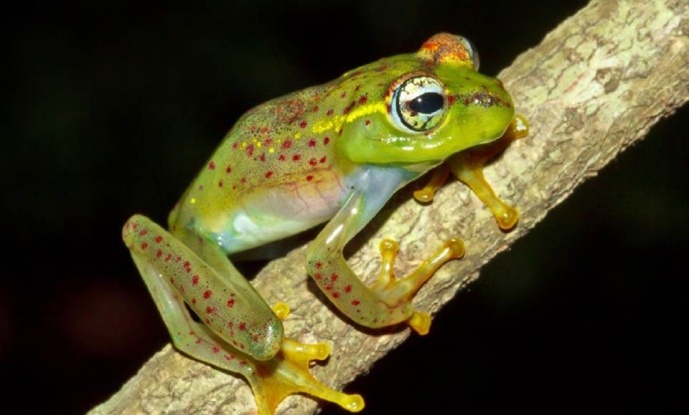Action Plan: "The Amphibians of the Sahamalaza Peninsula, Northwest Madagascar – Actions for their Conservation"

The Sahamalaza Peninsula (Northwest Madagascar) covers approximately 26,000 hectares. Parts of this Peninsula were designated by UNESCO as a Biosphere Reserve, which was followed by the creation of the Sahamalaza-Iles Radama National Park in July 2007. The Peninsula is characterized by a sub-humid climate which has two distinct seasons: a cooler, drier season (May to November) and a hotter, wetter season (December to April). This climate supports a unique type of hybrid forest, comprised of over 200 plant species within 68 families.
Amphibians are experiencing an unprecedented worldwide decline.Habitat destruction is one of the greatest contributory factors behind this decline. Madagascar supports incredibly high levels of amphibian diversity and endemism; however, high rates of deforestation threaten many of the habitats that these species rely upon. These threats extend to the Sahamalaza Peninsula in Northwest Madagascar, where forests are being cleared by slash-and-burn agriculture and small-scale logging. At least nineteen native amphibian species are known to occur from the peninsula. Three of these species are thought to be locally endemic to the peninsula (Cophyla berara, Boophis ankarafensis and Boophis tsilomaro); this may also be the case for a further three species that still require additional investigations for description and characterisation (Platypelis sp. aff. cowanii, Rhombophryne sp. aff. alluaudi and Stumpffia sp. aff. pygmaea).
An immediate cessation of forest destruction is advocated to prevent further population decline in the peninsula’s highly threatened local endemics and other forest-dependent species. Suggested necessary actions include improved community engagement and education, the establishment of a second research station, and the provision of sustainable means of employment and sustenance for local people. Research should be conducted into the feasibility of establishing a captive breeding colony for peninsula’s locally endemic species to insure against possible future extinction events resulting from the destruction of natural habitats on the peninsula.
To download the document "The Amphibians of the Sahamalaza Peninsula, Northwest Madagascar – Actions for their Conservation", click here.
